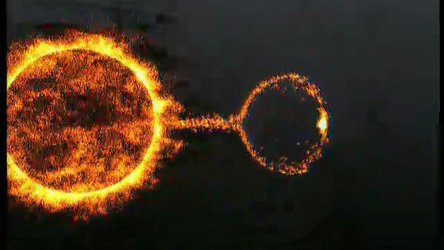Accept all cookies Accept only essential cookies See our Cookie Notice

About ESA
The European Space Agency (ESA) is Europe’s gateway to space. Its mission is to shape the development of Europe’s space capability and ensure that investment in space continues to deliver benefits to the citizens of Europe and the world.
Highlights
ESA - United space in Europe
This is ESA ESA facts Member States & Cooperating States Funding Director General Top management For Member State Delegations European vision European Space Policy ESA & EU Space Councils Responsibility & Sustainability Annual Report Calendar of meetings Corporate newsEstablishments & sites
ESA Headquarters ESA ESTEC ESA ESOC ESA ESRIN ESA EAC ESA ESAC Europe's Spaceport ESA ESEC ESA ECSAT Brussels Office Washington OfficeWorking with ESA
Business with ESA ESA Commercialisation Gateway Law at ESA Careers Cyber resilience at ESA IT at ESA Newsroom Partnerships Merchandising Licence Education Open Space Innovation Platform Integrity and Reporting Administrative Tribunal Health and SafetyMore about ESA
History ESA Historical Archives Exhibitions Publications Art & Culture ESA Merchandise Kids Diversity ESA Brand Centre ESA ChampionsLatest
Space in Member States
Find out more about space activities in our 23 Member States, and understand how ESA works together with their national agencies, institutions and organisations.
Science & Exploration
Exploring our Solar System and unlocking the secrets of the Universe
Go to topicAstronauts
Missions
Juice Euclid Webb Solar Orbiter BepiColombo Gaia ExoMars Cheops Exoplanet missions More missionsActivities
International Space Station Orion service module Gateway Concordia Caves & Pangaea BenefitsLatest
Space Safety
Protecting life and infrastructure on Earth and in orbit
Go to topicAsteroids
Asteroids and Planetary Defence Asteroid danger explained Flyeye telescope: asteroid detection Hera mission: asteroid deflection Near-Earth Object Coordination CentreSpace junk
About space debris Space debris by the numbers Space Environment Report In space refuelling, refurbishing and removingSafety from space
Clean Space ecodesign Zero Debris Technologies Space for Earth Supporting Sustainable DevelopmentLatest
Applications
Using space to benefit citizens and meet future challenges on Earth
Go to topicObserving the Earth
Observing the Earth Future EO Copernicus Meteorology Space for our climate Satellite missionsCommercialisation
ESA Commercialisation Gateway Open Space Innovation Platform Business Incubation ESA Space SolutionsLatest
Enabling & Support
Making space accessible and developing the technologies for the future
Go to topicBuilding missions
Space Engineering and Technology Test centre Laboratories Concurrent Design Facility Preparing for the future Shaping the Future Discovery and Preparation Advanced Concepts TeamSpace transportation
Space Transportation Ariane Vega Space Rider Future space transportation Boost! Europe's Spaceport Launches from Europe's Spaceport from 2012Latest
Integral - The Origin of Heavy Elements
What are we made of and where do we come from? Questions about evolution of stars and the Universe are perhaps central question of astronomy. Gamma ray astronomy is helping us understand the origin of the heavier chemical elements. The early universe contained only the lightest elements from which all heavier elements were synthesised. This can only happen in large quantities is in the centre of stars. When larger stars explode at the end of their life via supermova explosions, these heavier elements are dispersed into the interstellar medium, forming raw material for the next generation of stars and planets. The gamma rays produced during the supernova explosions carry the fingerprints of the newly created elements. Interview with Dr. Roland Diehl at the Max Planck Institute for Extraterrestrial Phsyics in Garching, Germany, a specialist in the heavy chemical elements. Radioactive elements emit gamma rays when they disintegrate. These rays can be identified and studied with a high resolution spectrometer such as the one on Integral. One of these is Aluminium 26. Integral will look for this element in the milky way to look for evidence of the production of heavy elements in the past million years. Other possible ends to stellar life cycles are discussed: neutron stars and black holes. These 'compact objects' are significant sources of high-energy emission that can be studied with Integral.
-
CREDIT
ESA -
LICENCE
ESA Standard Licence
-
Documentary
-
-
-
-
-
-
Active galaxies Astronomy Astrophysics Black holes Chemistry Energy release Galaxy Gamma-ray bursts Gamma-rays High-energy astrophysics Interview Matter Neutron Star Nitrogen Origins of universe Outer space Pulsars Results from space science programmes Scientific objectives Space science Stellar death Stellar explosion Supernovae Universe Violent universe

Integral - The Gamma Ray Burst

An artist's impression of the Integral and Proton: t…

An artist's impression of the Integral and Proton: t…

Integral Index















 Germany
Germany
 Austria
Austria
 Belgium
Belgium
 Denmark
Denmark
 Spain
Spain
 Estonia
Estonia
 Finland
Finland
 France
France
 Greece
Greece
 Hungary
Hungary
 Ireland
Ireland
 Italy
Italy
 Luxembourg
Luxembourg
 Norway
Norway
 The Netherlands
The Netherlands
 Poland
Poland
 Portugal
Portugal
 Czechia
Czechia
 Romania
Romania
 United Kingdom
United Kingdom
 Slovenia
Slovenia
 Sweden
Sweden
 Switzerland
Switzerland

























